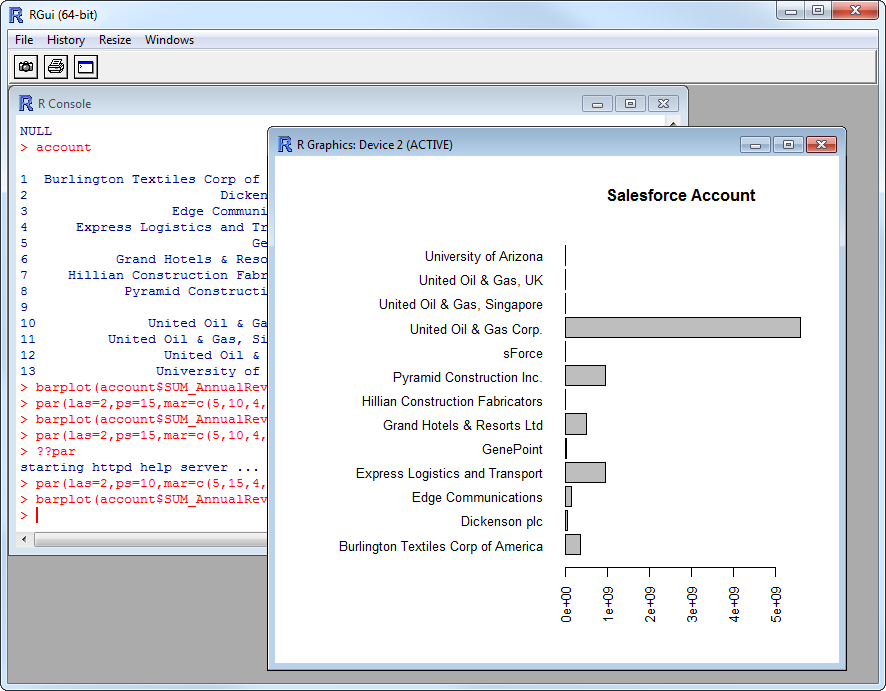Discover how a bimodal integration strategy can address the major data management challenges facing your organization today.
Get the Report →Analyze Snowflake Data in R
Use standard R functions and the development environment of your choice to analyze Snowflake data with the CData JDBC Driver for Snowflake.
Access Snowflake data with pure R script and standard SQL on any machine where R and Java can be installed. You can use the CData JDBC Driver for Snowflake and the RJDBC package to work with remote Snowflake data in R. By using the CData Driver, you are leveraging a driver written for industry-proven standards to access your data in the popular, open-source R language. This article shows how to use the driver to execute SQL queries to Snowflake and visualize Snowflake data by calling standard R functions.
Install R
You can match the driver's performance gains from multi-threading and managed code by running the multithreaded Microsoft R Open or by running open R linked with the BLAS/LAPACK libraries. This article uses Microsoft R Open 3.2.3, which is preconfigured to install packages from the Jan. 1, 2016 snapshot of the CRAN repository. This snapshot ensures reproducibility.
Load the RJDBC Package
To use the driver, download the RJDBC package. After installing the RJDBC package, the following line loads the package:
library(RJDBC)
Connect to Snowflake as a JDBC Data Source
You will need the following information to connect to Snowflake as a JDBC data source:
- Driver Class: Set this to cdata.jdbc.snowflake.SnowflakeDriver
- Classpath: Set this to the location of the driver JAR. By default this is the lib subfolder of the installation folder.
The DBI functions, such as dbConnect and dbSendQuery, provide a unified interface for writing data access code in R. Use the following line to initialize a DBI driver that can make JDBC requests to the CData JDBC Driver for Snowflake:
driver <- JDBC(driverClass = "cdata.jdbc.snowflake.SnowflakeDriver", classPath = "MyInstallationDir\lib\cdata.jdbc.snowflake.jar", identifier.quote = "'")
You can now use DBI functions to connect to Snowflake and execute SQL queries. Initialize the JDBC connection with the dbConnect function.
To connect to Snowflake:
- Set User and Password to your Snowflake credentials and set the AuthScheme property to PASSWORD or OKTA.
- Set URL to the URL of the Snowflake instance (i.e.: https://myaccount.snowflakecomputing.com).
- Set Warehouse to the Snowflake warehouse.
- (Optional) Set Account to your Snowflake account if your URL does not conform to the format above.
- (Optional) Set Database and Schema to restrict the tables and views exposed.
See the Getting Started guide in the CData driver documentation for more information.
Built-in Connection String Designer
For assistance in constructing the JDBC URL, use the connection string designer built into the Snowflake JDBC Driver. Either double-click the JAR file or execute the jar file from the command-line.
java -jar cdata.jdbc.snowflake.jar
Fill in the connection properties and copy the connection string to the clipboard.

Below is a sample dbConnect call, including a typical JDBC connection string:
conn <- dbConnect(driver,"jdbc:snowflake:User=Admin;Password=test123;Server=localhost;Database=Northwind;Warehouse=TestWarehouse;Account=Tester1;")
Schema Discovery
The driver models Snowflake APIs as relational tables, views, and stored procedures. Use the following line to retrieve the list of tables:
dbListTables(conn)
Execute SQL Queries
You can use the dbGetQuery function to execute any SQL query supported by the Snowflake API:
products <- dbGetQuery(conn,"SELECT Id, ProductName FROM Products")
You can view the results in a data viewer window with the following command:
View(products)
Plot Snowflake Data
You can now analyze Snowflake data with any of the data visualization packages available in the CRAN repository. You can create simple bar plots with the built-in bar plot function:
par(las=2,ps=10,mar=c(5,15,4,2))
barplot(products$ProductName, main="Snowflake Products", names.arg = products$Id, horiz=TRUE)







